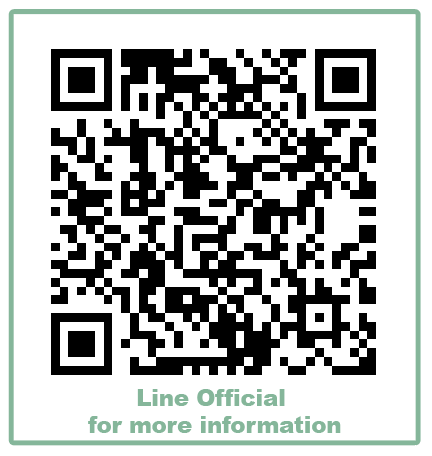Agricultural Tourism Activity Set Based on the 4MAT Teaching Model to Promote Executive Function in Young Children
DOI:
https://doi.org/10.14456/jescu.2025.5Keywords:
agricultural tourism activity, executive function, young childrenAbstract
The purpose of this research was to develop an agricultural tourism activity set based on the 4MAT teaching model to promote executive function in young children. Samples were selected using purposive sampling, consisted of 40 young children aged 4–6 years from kindergarten under office of the permanent secretary (OPS), academic year 2023. The research tools include: 1) interviews conducted with 2 groups of informants, the staff working in agricultural tourism sites and early childhood teachers working in the school, 2) an agricultural tourism activity set based on the 4MAT teaching model consisted of an activity set manual, learning materials, and a participation assessment form, and 3) a behavioral assessment tool for measuring executive function in young children. The statistics used for data analysis included mean, standard deviation, and relative developmental scoring. The findings indicated that: 1) the patterns of agricultural tourism activities for young children emphasized on guided tours and demonstrations, providing learning experiences about agricultural lifestyles and introducing the concept of the sufficiency economy through a single-session activity, 2) the agricultural tourism activity set based on the 4MAT was rated as highly appropriate (M = 4.5), and 3) after participating in activities using the agricultural tourism activity set based on the 4MAT teaching model, young children had a higher mean score than before showed an improvement of executive function score (M = 29.12, SD = 9.94).
References
ภาษาไทย
ขวัญฟ้า รังสิยานนท์, พรรัก อินทามระ, ศศิพันธุ์ เปี๊ยนเปี่ยมสิน, ศลีสุภา วรรณสุทธิ์, และ ศิริพงษ์ ทิณรัตน์. (2562). คู่มือครูและผู้ปกครองการเสริมสร้างทักษะสมอง EF สำหรับเด็กปฐมวัย. เพอลังอิ พับลิชชิ่ง. https://drive.google.com/file/d/1DO32hoHQgGEy87t90faOhyFlweJQTd8r/view?usp=sharing
คณะสังคมศาสตร์ มหาวิทยาลัยเกษตรศาสตร์. (2564). รายงานการพัฒนาเด็กและเยาวชน ประจำปี 2563. https://www.dcy.go.th/public/mainWeb/file_download/1664788620103-248403179.pdf
นาฎสุดา เชมนะสิริ. (2555). การพัฒนาแหล่งท่องเที่ยวเชิงเกษตร (พิมพ์ครั้งที่1). ฟิสิกส์เซ็นเตอร์.
ปนัดดา ธนเศรษฐกร, นวลจันทร์ จุฑาภักดีกุล, และ สุภาวดี หาญเมธ. (2561). คู่มือพัฒนาทักษะสมอง EF Executive Functions สำหรับครูปฐมวัย. มติชน.
ประสิทธิ์ หนูกุ้ง และ เรชา ชูสุวรรณ. (2565). การวางยุทธศาสตร์การจัดการศึกษา Next normal : ความปกติถัดไปของการจัดการศึกษาเพื่อพัฒนาคุณภาพผู้เรียน. วารสารสหวิทยาการมนุษยศาสตร์และสังคมศาสตร์, 5(3), 776-789. https://so04.tci-thaijo.org/index.php/jmhs1_s/article/view/257934/176011
วรรธนา นันตาเขียน. (2563). การพัฒนารูปแบบการจัดประสบการณ์การเรียนรู้เชิงบูรณาการเพื่อส่งเสริมความสามารถในการคิดเชิงบริหารสำหรับเด็กปฐมวัย [วิทยานิพนธ์ครุศาสตร์มหาบัณฑิต ไม่ได้ตีพิมพ์]. มหาวิทยาลัยศรีนครินทรวิโรฒ.
วราพงษ์ ป่านแก้ว. (2558, 19 กันยายน). วิถีคนเมือง ชีวิตป่วน สังคมป่วย. หนังสือพิมพ์โพสต์ทูเดย์, 1. https://soclaimon.wordpress.com//2015/11/12/วิถีคนเมือง-ชีวิตป่วน-สั/
วไลพร เมฆไตรรัตน์ และ สุชานาฏ ไชยวรรณะ. (2563). ผลการใช้นวัตกรรมการอ่านแบบกระบวนการ 3R โดยพ่อแม่ ผู้ปกครองเพื่อพัฒนาทักษะ EF สำหรับเด็กปฐมวัย. วารสารบัณฑิตศึกษา มหาวิทยาลัยราชภัฏวไลยอลงกรณ์ ในพระบรมราชูปถัมภ์, 14(3), 134-174. https://so02.tci-thaijo.org/index.php/JournalGradVRU/article/view/242642
โสภารัตน์ น้ำมัน, กุสุมา ใจสบาย, และ กตัญญุตา บางโท. (2566). การพัฒนาชุดฝึกทักษะคณิตศาสตร์ร่วมกับการจัดการเรียนรู้แบบ 4MAT เพื่อส่งเสริมความสามารถในการแก้ปัญหาทางคณิตศาสตร์ของนักเรียนชั้นประถมศึกษาปีที่ 3. วารสารร้อยแก่นสารอะคาเดมี, 9(2), 17-32. https://so02.tci-thaijo.org/index.php/JRKSA/article/view/265816/179186
อุษณีย์ อนุรุทธ์วงศ์. (2555). การพัฒนาความคิดระดับสูง. ไอคิว บุ๊คเซ็นเตอร์.
ภาษาอังกฤษ
Chevalier, N. (2015). Executive function development: Making sense of the environment to behave adaptively. Current Directions in Psychological Science, 24(5), 363-368. https://doi.org/10.1177/0963721415593724
Vygotsky, L. S. (1978). Mind in society: The development of higher psychological processes. Harvard University Press.
Downloads
Published
How to Cite
Issue
Section
License

This work is licensed under a Creative Commons Attribution-NonCommercial-NoDerivatives 4.0 International License.




